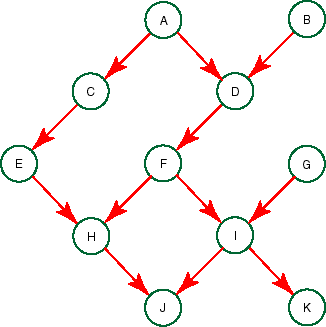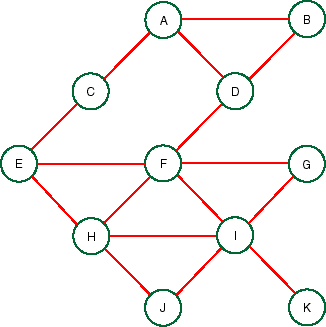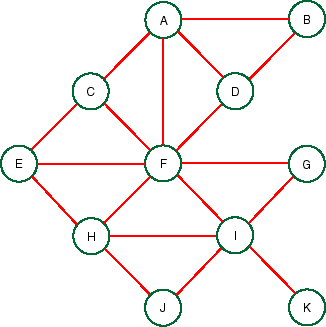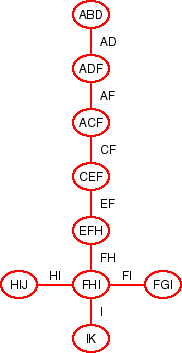


Go backward to Solution to part (f)
Go up to 4 Variable Elimination Algorithm (Multiply Connected)
Solution to part (g)

- Draw an undirected graph, with the same nodes as the original
belief network, and with an arc between two nodes X and Y if there
is a factor that contains both X and Y. [This is called the moral
graph of the Bayesian network; can you guess why?]

This is sometimes called the moral graph, as we married the parents of
each node. Note this is all you ever do to get this graph; draw arcs
between all of the parents of each node, and drop the arc directions.
- Draw another undirected
graph, with the same nodes where
there is an arc between two nodes if there is an original factor or a
created factor (given the elimination ordering for part (a)) that
contains the two nodes. Notice how the second graph triangulates the
moral graph.

- Draw a third undirected graph where the nodes correspond to the
maximal cliques of the second (triangulated) graph. [Note that a clique of a graph G is a set of
nodes of G so that there is an arc in G between each pair of nodes in
the the clique. We refer to the nodes of the Bayesian network/moral
graph as variables.]
Draw arcs between
the nodes to maintain the properties (i) there is exactly one path
between any two nodes and (ii) if a variable is in two nodes, every
node on the path between these two nodes
contains that variable. The graph you just drew is called a junction tree or
a clique tree. On the arc between two cliques, write the variables
that are in the intersection of the cliques. What is the relationship
between the clique tree and the VE derivation?

The variables on the intersections of the cliques correspond to the
factors added in the VE algorithm. The last two factors of the VE
algorithm are needed to get a factor on J from the HIJ clique.
As an extra exercise, draw the junction tree corresponding to the two variable
elimination orderings in the solution to part (f).
Computational
Intelligence online
material, ©David Poole, Alan Mackworth and Randy Goebel, 1999





